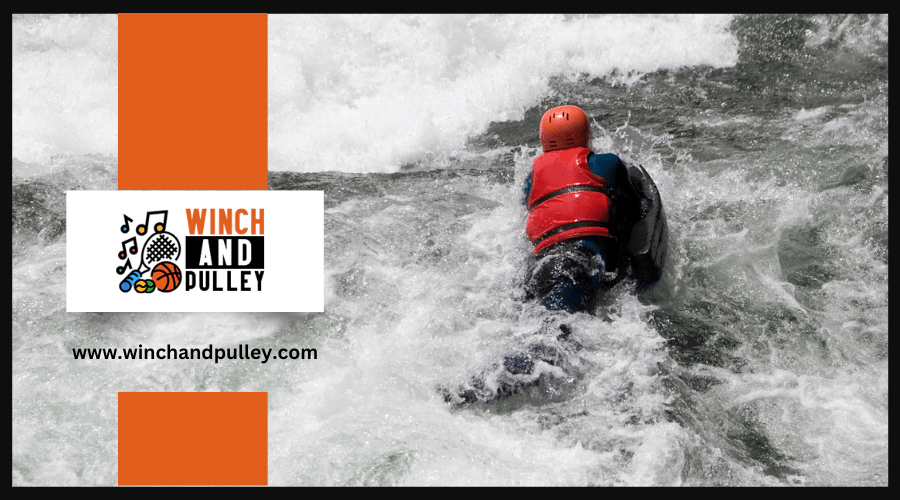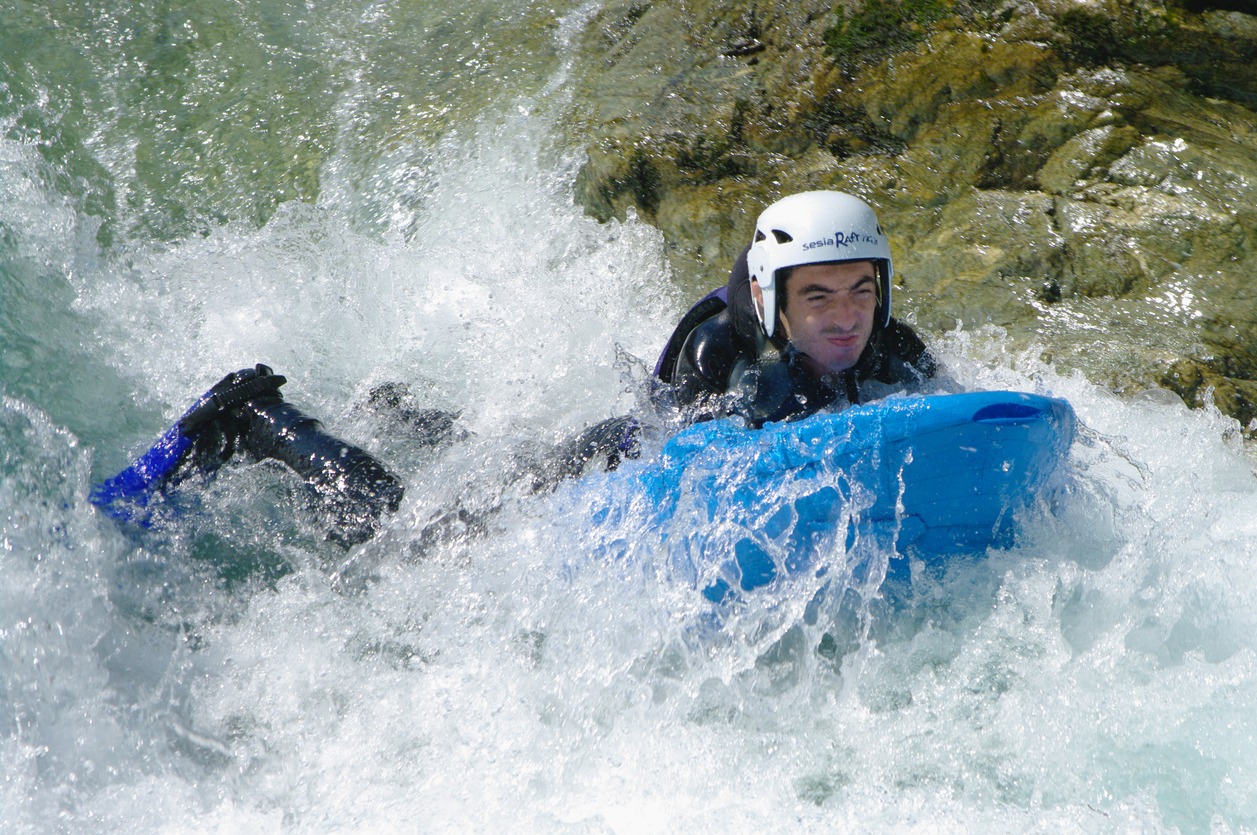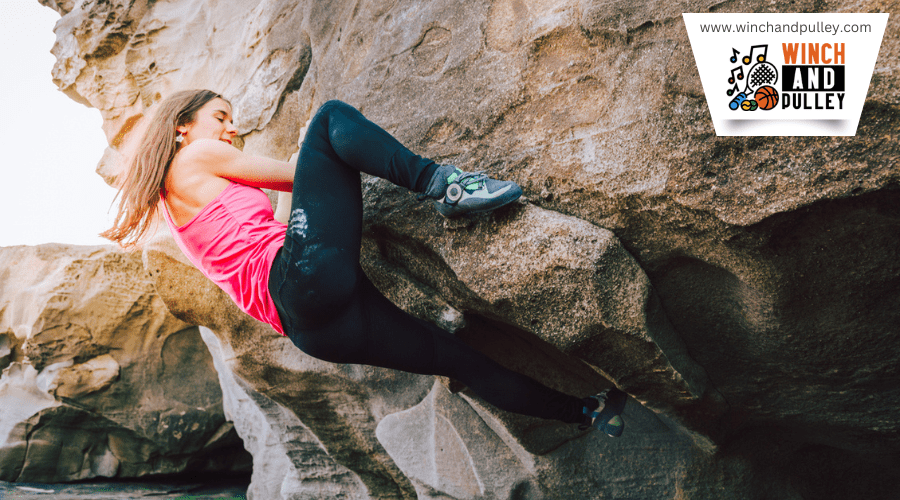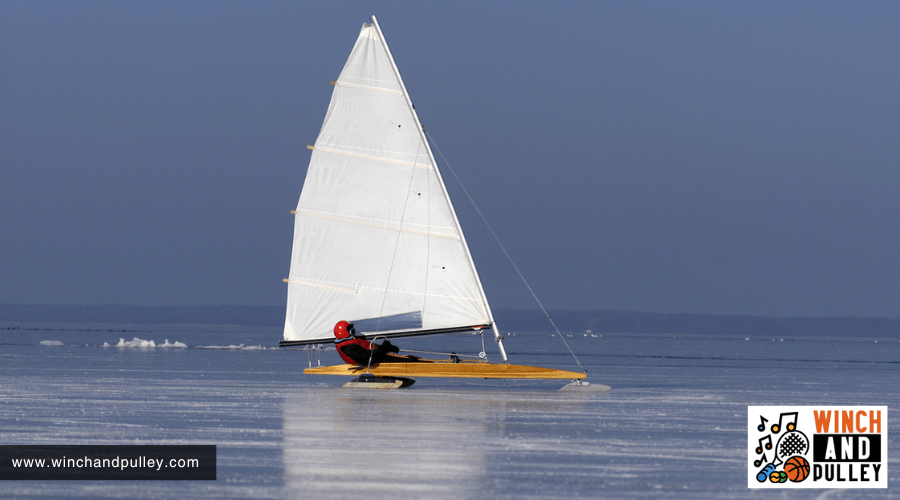Hydrospeeding: Navigating Rivers on Small Buoyant Boards

When you think about exploring a river, you might picture rafting or kayaking, but hydrospeeding offers a different kind of thrill. Imagine lying on a small buoyant board, feeling every rush of water as you navigate through rapids, bringing you closer to the river's power than ever before.
Originating in the French Alps during the 1970s, this sport demands not only physical fitness but also a thorough understanding of safety protocols. Curious about the gear required and the best locations to try it? There's much more to uncover about this unique water adventure.
Key Takeaways
Hydrospeeding, also known as riverboarding, involves navigating rivers on small, buoyant boards while equipped with safety gear such as helmets, wetsuits, and buoyancy aids. Originating in the French Alps in the 1970s, it offers an immersive experience with river rapids. Participants need strong swimming skills, physical endurance, and an understanding of river hydraulics. Essential gear includes a hydrospeed board, wetsuit, helmet, and buoyancy aids. Popular locations for hydrospeeding include the French Alps, Colorado, and California, where guided tours and courses cater to all skill levels.
What Is Hydrospeeding?

Hydrospeeding is an exhilarating water sport where participants navigate rivers on small, buoyant boards while swimming with flippers. Imagine being fully immersed in the river, feeling the rush of whitewater against your body as you steer and propel yourself with a Hydrospeed board. It's not just about the thrill; it's about becoming one with the water, using your strength and agility to ride the rapids.
Participants in hydrospeeding are equipped with essential safety gear, including wetsuits, helmets, and life jackets. These items protect you from natural obstacles like rocks and ensure you remain buoyant in turbulent waters. The Hydrospeed board itself is designed to provide flotation and control as you navigate through the river's twists and turns.
This activity is physically demanding, requiring a good level of fitness and swimming skills. However, the adrenaline rush and sense of accomplishment make it all worthwhile. Hydrospeeding offers a safe yet thrilling way to experience the power of whitewater, making it a favorite among adventure seekers worldwide. If you're looking for an exciting, heart-pounding water sport, hydrospeeding is the way to go.
Origins of Hydrospeeding
In the 1970s, adventurous rafting instructors in the French Alps sought new ways to navigate whitewater, giving birth to hydrospeeding. These innovative guides aimed for an experience that brought them closer to the river's raw power. They began experimenting with small, buoyant boards, allowing them to ride the currents and rapids more intimately than traditional rafts.
This new sport quickly gained popularity, spreading beyond the French Alps to other whitewater hotspots such as New Zealand and California. Inspired by the idea of full-contact river navigation, guides in these regions developed their own techniques and equipment. Through these collaborative efforts, modern hydrospeed boards were perfected, designed to provide an adrenaline rush while ensuring safety.
In hydrospeeding, participants are fully immersed in the river, feeling every twist, turn, and surge of water. Unlike traditional rafting, they aren't just passengers; they actively guide their boards through the rapids. This close-to-the-action approach has made hydrospeeding a favorite among thrill-seekers looking for a more intense and personal whitewater experience. The sport's origins reflect the creativity and passion of those early rafting guides in the French Alps.
Essential Hydrospeeding Gear
View this post on Instagram
Understanding the river class system is crucial for assessing the difficulty and risks you'll encounter while hydrospeeding. River classes range from Class I (easy) to Class V (expert), each indicating a different level of challenge and danger. Here's a breakdown to help you understand what each class entails: Successfully managing these river classes involves mastering techniques for reading the river, such as proper approach, entry into rapids, and riding waves. Your hydrospeed board provides added buoyancy and stability, aiding you in tackling these whitewater challenges. Now that you understand the complexities of river classes, let's explore who can take part in the exhilarating sport of hydrospeeding. Participants must be at least 13 years old and able to swim a minimum of 25 meters. This ensures a basic level of comfort and safety in the water, which is vital given the nature of this sport. Although prior experience isn't required, being a strong swimmer is crucial. Hydrospeeding demands a good level of physical fitness, including sufficient body weight and strength to navigate powerful river currents. Your ability to handle these challenges will directly impact your overall experience. Participants should also be eager to engage in adventure and water activities. Tackling whitewater rapids on a small, buoyant board requires enthusiasm and a readiness to face the unknown. Safety measures are always in place to ensure that even first-timers can enjoy hydrospeeding securely. However, the sport's physically demanding nature means you should be prepared for a workout. Strong swimming skills, endurance, and an adventurous spirit are essential for an unforgettable hydrospeeding experience. To explore hydrospeeding variations, it's essential to understand the necessary gear and equipment to ensure safety and preparedness. Popular destinations around the globe offer exhilarating experiences, but mastering safety tips and techniques is crucial. Here's a comprehensive guide on what you need to get started, where to go, and how to stay safe while enjoying this adrenaline-pumping activity. Selecting the appropriate hydrospeed board is crucial, as differences in material, weight, and design are tailored to various skill levels and river conditions. Your choice of equipment can significantly impact your hydrospeeding experience. Boards, or hydrospeeds, come in materials such as foam, plastic, and fiberglass, each offering unique benefits. Here are four key factors to consider when choosing your hydrospeed equipment: Choose wisely to match your skill level and the river's demands. The right board, paired with a well-fitted wetsuit, sturdy flippers, and a reliable helmet, ensures a safer and more enjoyable hydrospeeding adventure. After equipping yourself with the right hydrospeed board and accessories, you'll be ready to explore some of the world's most exhilarating hydrospeeding locations. New Zealand is a top destination for this thrilling activity, featuring the white water rapids of the Kawarau and Tongariro Rivers. These sites offer a perfect blend of challenging rapids and stunning natural beauty, making them essential visits for hydrospeeding enthusiasts. In Europe, the French Alps are renowned for their fierce, glacier-fed rivers. The Durance and Ubaye Rivers provide a range of rapid classes, from moderate Class III to the more extreme Class V. Spain also offers excellent hydrospeeding experiences, especially in the Pyrenees, with the Noguera Pallaresa River being a popular choice for its diverse rapids and scenic views. Another prime location in France is the Isère River, known for its thrilling white water sections that cater to both beginners and seasoned pros. With hydrospeeding gaining popularity globally, guided tours and courses are readily available in these prime locations, ensuring you can enjoy the sport safely while experiencing some of the best river environments the world has to offer. Ensuring your safety while hydrospeeding starts with wearing proper gear like helmets, wetsuits, and lifejackets to protect against natural obstacles. Safety gear is your primary line of defense against the unpredictable nature of rivers. Equally significant is understanding the river classifications, which range from Class I (easiest) to Class V (most difficult). These classifications help you gauge the difficulty level and risk associated with different rapids. Before you hit the water, make sure you're fully prepared: Hydrospeeding variations like river bugging, canyoning, and tubing offer different whitewater experiences, but safety remains paramount. By following these guidelines, you can enjoy a thrilling yet safe adventure on the water. Europe boasts some of the finest hydrospeeding spots, notably in the French Alps and Spain's Pyrenees, where you can enjoy both exhilarating rapids and breathtaking landscapes. North America also offers excellent locations, with rivers suitable for various skill levels. Explore these premier destinations to plan your next hydrospeeding adventure. Europe offers some of the most exhilarating and scenic rivers for hydrospeeding, perfect for thrill-seekers and nature lovers alike. Here are four top destinations you shouldn't miss: Each location provides a unique experience, making Europe a prime destination for hydrospeeding. So grab your board and plunge into these exhilarating waters! After exploring Europe's exhilarating rivers, turn your attention to North America's premier hydrospeeding locations. Begin your adventure in Colorado, where the Arkansas and Colorado Rivers offer thrilling rapids and unforgettable experiences. Whether you're navigating the frothy waters of the Arkansas River or tackling the powerful currents of the Colorado River, you're in for a heart-pounding ride. Next, venture to California, home to the American River and Kern River. The American River provides diverse challenges, making it suitable for both beginners and seasoned hydrospeeders. Meanwhile, the Kern River's varying levels of difficulty ensure there's something for everyone. Oregon should be your subsequent stop, where the Clackamas River and McKenzie River await. These rivers are renowned not only for their exciting rapids but also for their breathtaking scenery, immersing you in nature as you traverse their waters. Yes, hydrospeeding can be safe if you wear proper safety gear, follow guidelines, and have strong swimming skills. Always go with qualified guides and ensure your abilities match the river's difficulty level. Hydrospeeding is an exhilarating water sport that involves navigating rivers on small, buoyant boards. Participants lie prone on the boards, use flippers for propulsion, and steer through rapids, experiencing an up-close and thrilling adventure. Ready to plunge into the thrilling world of hydrospeeding? This adventure sport lets you experience the river's power up close, using a small buoyant board and essential safety gear. Whether you're a seasoned thrill-seeker or a newcomer eager to explore, hydrospeeding offers an exhilarating way to navigate whitewater rapids. With proper preparation and a passion for excitement, you'll conquer the currents and create unforgettable memories. So grab your board, gear up, and let the river guide you on this unforgettable journey!Essential Hydrospeeding Gear:
How to Hydrospeed

River Classes Explained
Who Can Hydrospeed?
Hydrospeeding Variations

Equipment and Gear Essentials
Popular Hydrospeeding Locations
Safety Tips and Techniques
Best Hydrospeeding Locations
Top European Destinations
North American Hotspots
Frequently Asked Questions
Is Hydrospeeding Safe?
What Is Hydrospeeding?
Conclusion




